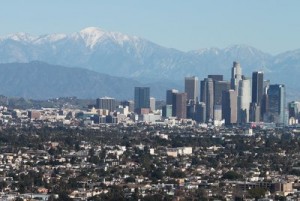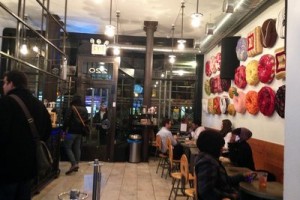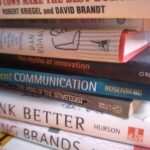Being Connected is Not the Same as Being Plugged in
Being connected and plugged in are not the same thing. Think beyond technology and connectivity. Think of the Vulcan mind meld (RIP Leonard Nimoy) where you can effectively channel the thoughts of another. If you could do that with those you serve, you’d be plugged in to their needs. This always in touch state is one of the characteristics of having an effective promise delivery system, the invisible system by which we all make and keep promises. Every individual and organization has a promise delivery system; government is no exception.
Stakeholders are key
Promise delivery systems often break down from the start by failing to recognize one or more stakeholders. An easy example to pick on is most any publicly traded company. Plagued by short term thinking they often place shareholders first, ignoring other stakeholders like customers and employees that ultimately determine the health of the organization.
 In the case of local government the stakeholders often ignored are those that are under-served or have little voice or representation. It is easy to think of the mentally ill, or veterans experiencing homelessness because those audiences, while highly visible, are not highly vocal. In urban America, my home town of Seattle included, our street corners showcase this human suffering and the broken promises delivered from our government’s failed public policies. Imagine if the fire department never showed up to your burning home. That is what it must feel like for the marginalized stakeholders in our communities.
In the case of local government the stakeholders often ignored are those that are under-served or have little voice or representation. It is easy to think of the mentally ill, or veterans experiencing homelessness because those audiences, while highly visible, are not highly vocal. In urban America, my home town of Seattle included, our street corners showcase this human suffering and the broken promises delivered from our government’s failed public policies. Imagine if the fire department never showed up to your burning home. That is what it must feel like for the marginalized stakeholders in our communities.
Imagine if the fire department never showed up to your burning home. That is what it must feel like for the marginalized stakeholders in our communities.
 There is another audience that is underrepresented, and is often similarly ignored, taken for granted, and largely invisible to government, namely small business. You hear it often, that small business is the backbone of the economy. Small business creates more jobs more quickly while large organizations may continue to shed jobs, bolstering profits and earnings along the way to their short term utopia. Small business owners are usually so busy working that they too join the ranks of the invisible and marginalized. This is especially true of small businesses that have no storefront, operate virtually, often invisible to the public, and out of mind of city government.
There is another audience that is underrepresented, and is often similarly ignored, taken for granted, and largely invisible to government, namely small business. You hear it often, that small business is the backbone of the economy. Small business creates more jobs more quickly while large organizations may continue to shed jobs, bolstering profits and earnings along the way to their short term utopia. Small business owners are usually so busy working that they too join the ranks of the invisible and marginalized. This is especially true of small businesses that have no storefront, operate virtually, often invisible to the public, and out of mind of city government.
An Inspiring Leader Connects with Small Business Owners
 So, I find it refreshing and impressive that Mayor Eric Garcetti of Los Angeles, California holds office hours with small business owners. Providing access to small businesses sends a message that small business is a key stakeholder to the health of the Los Angeles community and economy. Holding office hours with small business owners also helps the mayor stay in touch with the changing external environment that might be more readily detected from the perspectives of individual small business owners. These “eyes and ears” around the city serve as sensors in the ground helping to keep informed, the city’s promise delivery system. With this information the city can shape and shift strategy and be more mindful of the promises made to the small businesses that call it home.
So, I find it refreshing and impressive that Mayor Eric Garcetti of Los Angeles, California holds office hours with small business owners. Providing access to small businesses sends a message that small business is a key stakeholder to the health of the Los Angeles community and economy. Holding office hours with small business owners also helps the mayor stay in touch with the changing external environment that might be more readily detected from the perspectives of individual small business owners. These “eyes and ears” around the city serve as sensors in the ground helping to keep informed, the city’s promise delivery system. With this information the city can shape and shift strategy and be more mindful of the promises made to the small businesses that call it home.
Conversations in Your City
How about in your city? Are small businesses included in the conversation? If you are in city leadership, are you holding office hours? Are business of all types and sizes equally welcome? What “sensors in the ground” are you establishing in order to keep informed? And, once you are informed, how do you apply the learning (doing the Vulcan mind meld) across various departments so that the city demonstrates a well coordinated promise delivery system that keeps attuned to the small business community and business landscape in which they operate?
About the Author
 Gregory Olson is a consultant, speaker, and author of The Experience Design BLUEPRINT: Recipes for Creating Happier Customers and Healthier Organizations. Chapters in the book that especially pertain to this post include: Chapter 8: The Promise Delivery System; and Chapter 9: The Neighborhood. Read the full color print edition or on your Kindle Reader App supported device using the free Kindle Reader application.
Gregory Olson is a consultant, speaker, and author of The Experience Design BLUEPRINT: Recipes for Creating Happier Customers and Healthier Organizations. Chapters in the book that especially pertain to this post include: Chapter 8: The Promise Delivery System; and Chapter 9: The Neighborhood. Read the full color print edition or on your Kindle Reader App supported device using the free Kindle Reader application.





